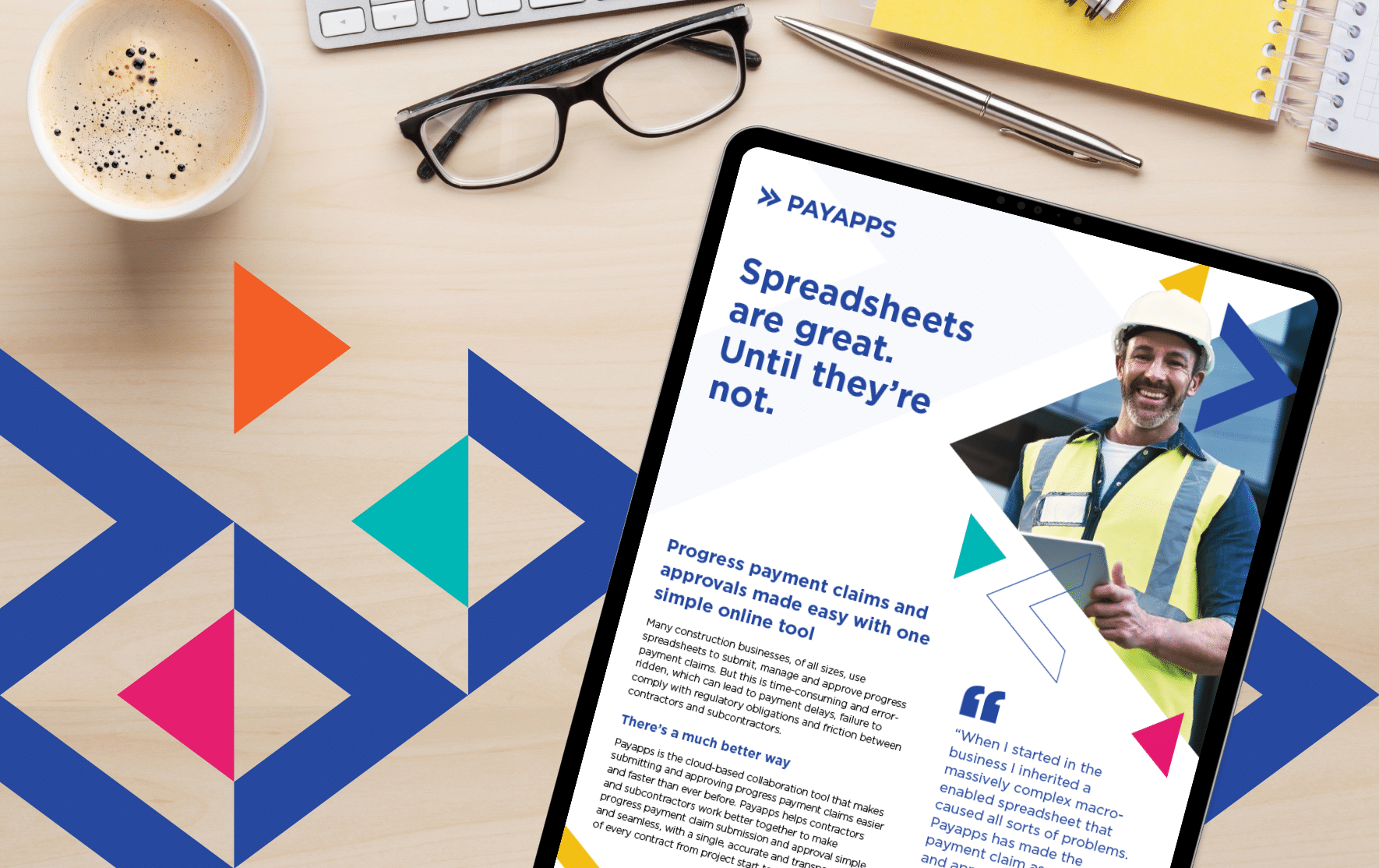IF YOU’RE IN THE CONSTRUCTION INDUSTRY AND TRYING TO KEEP TRACK OF PROGRESS CLAIMS, EXCEL REALLY, REALLY SUCKS.

If you’re a contractor drowning in what feels like 1000 differing spreadsheets from each of your subbies, or whether you’re one of those subcontractors and you’re trying to keep track of who owes you what and when – you know exactly what we’re talking about.
DOES NOT COMPUTE
It’s not that spreadsheets are bad per se, if you’re a statistician, Excel is probably your best friend. If you’re an accountant, it is likely to be indispensable. If you’re an inventory manager, you probably can’t live without it. The problem is that trying to manage something as complex as progress claims for a large construction site, or across multiple jobs is kind of like trying to cross the Nullabor on horseback: seemed like a great idea at the time but ended up being a monumental pain in the rear end.
THE ERROR OF YOUR WAYS
If you think it‘s just the inconvenience that’s the issue? Think again. This inefficient practice is probably costing you a lot of money. Aside from the time and resources spent wrestling with rogue cells, studies show that almost 90% of spreadsheets contain errors. Think about that for a moment. If you’re a subcontractor, your Progress Claims could represent tens of thousands of dollars’ worth of revenue. Make a mistake in your hastily thrown together spreadsheet and you could be missing out on payments that are rightfully yours.
REASONS FOR CHANGE
1. LOST IN TRANSLATION:
Poorly collated and presented data can be incredibly difficult to interpret, especially when you would rather be on to the next job than going cross-eyed trying to figure what all those figures and formula mean.
2. ANALYSIS PARALYSIS:
Even when all the data is in there and visible, the challenge can lie in analysing the data to extract the information and identify trends that will help to contribute to business efficiency.
3. TELL ME A STORY:
Numbers are terrible at providing historical context. A table of numbers simply cannot describe a dispute, discrepancy or discussion between the contractor and the subbie regarding what constitutes completion of a job.
4. COLLABORATE MY DAY:
A process that requires multiple parties to communicate with each other and understand the situation on the ground is hardly made for the cold, hard clinical world of spreadsheets. All parties need to be able to collaborate to ensure that the right information is being shared at the right time to ensure positive outcomes.
THE ENTIRE PROCESS OF:
lodging, approving, negotiating and claiming progress claims requires a significant amount of interaction between the contractor and their subcontractors. A spreadsheet is hardly the ideal forum in which to work collaboratively towards the desired outcome.
LIGHT AT THE END OF THE TUNNEL
All this is precisely why we developed Payapps. Our versatile, intuitive tool allows all parties to collaborate effectively, quickly, simply and accurately online to ensure that all payments are made as required and on time.
Payapps allows the subcontractor to effortlessly prepare and submit their claim, with the ability to attach supporting photos and documents. All the while seamlessly calculating Retention and generating their Progress Claim PDF.

On the Contract Administrator side, receiving, assessing and approving claims has been fully automated to save time, stress and eliminate errors.








